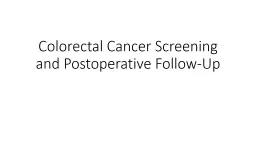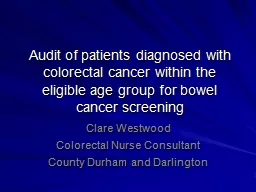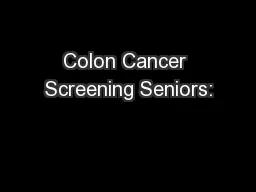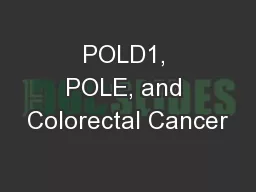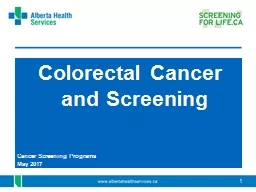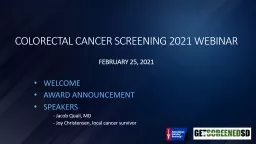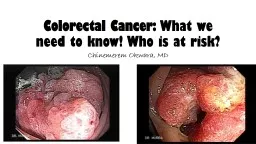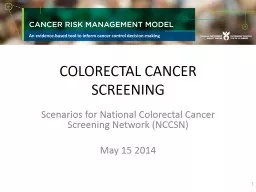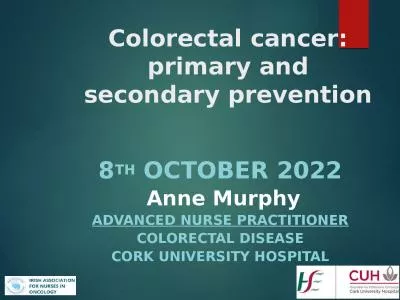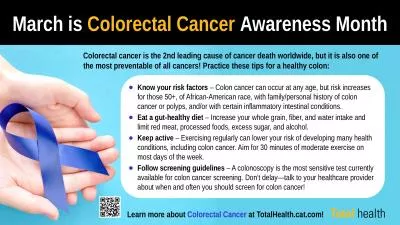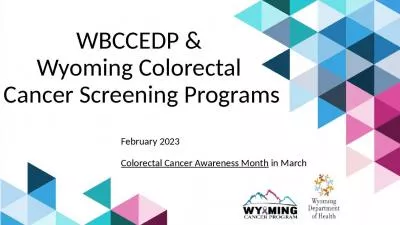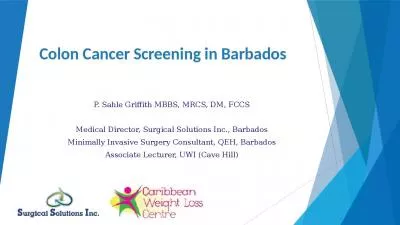PPT-Colorectal Cancer Screening and Postoperative Follow-Up
Author : tatyana-admore | Published Date : 2018-10-31
Colorectal Cancer CRC Incidence 2 nd commonest cause of cancer deaths in males 3 rd commonest cause of cancer deaths in females Lifetime risk 2015 Canada 25000 People
Presentation Embed Code
Download Presentation
Download Presentation The PPT/PDF document "Colorectal Cancer Screening and Postoper..." is the property of its rightful owner. Permission is granted to download and print the materials on this website for personal, non-commercial use only, and to display it on your personal computer provided you do not modify the materials and that you retain all copyright notices contained in the materials. By downloading content from our website, you accept the terms of this agreement.
Colorectal Cancer Screening and Postoperative Follow-Up: Transcript
Download Rules Of Document
"Colorectal Cancer Screening and Postoperative Follow-Up"The content belongs to its owner. You may download and print it for personal use, without modification, and keep all copyright notices. By downloading, you agree to these terms.
Related Documents

